Before this trip, I’d never been to Colorado or New Mexico before. I’d never seen the Rocky Mountains, and although I had been to Arizona, it was almost 20 years ago, and I didn’t get the same perspective that I had this time. This time I found myself truly marveling at the landscape, the mountains, the desert, the overall expanse of land that exists in so much of the United States.
After all, I am a Northeasterner: born in the Bronx, raised in the suburbs of NYC, and a resident of New England since I was eighteen years old. I’ve never lived in the country; I’ve never lived more than 90 miles from a major metropolitan area. I now live a few miles from Springfield, Masschusetts, and about 25 miles from Hartford, Connecticut. Although Springfield and Hartford aren’t huge cities, they are densely populated urban areas without much open space.
It’s true that from our home we can drive thirty minutes or less and be in fairly rural places—farms are nearby, and the mountains of Vermont and New Hampshire are just two hours away. But even in those places, you don’t see miles and miles of empty road surrounded by undeveloped land with barely a sign or gas station or store to be seen.
So driving through Colorado and especially New Mexico was eye-opening for me. We took I-25 south from Denver and headed to New Mexico. Here we were on an interstate highway, the speed limit 75 miles an hour, and within a short distance from Denver, we began to see mountains. I snapped photo after photo as we sped by, trying to capture the Rocky Mountains from the car.
Fortunately, we decided not to take I-25 all the way to Santa Fe, but stopped overnight in Raton, New Mexico, the first town over the state line from Colorado, about three hours south of Denver. It was not a scenic place. We stayed in a Best Western right off the highway, and the highest rated restaurant in town on TripAdvisor and Yelp was the place right in the Best Western. It was not good. But it was edible. There was no nightlife in Raton, so we rose early to get started on the rest of our journey.
Before we left Raton, however, I’d spotted a brochure for “Historic Raton” in the motel lobby and asked the person at the front desk how to get there. She very pleasantly gave me directions, though I have to think she wondered why I wanted to see the town. The town consisted of two parallel streets of buildings (with two or three cross streets) about maybe a quarter mile long. And almost all the buildings were empty, boarded up, out of business. It was depressing.
But it was important for us to see. This was a town that had once been an important mining town, according to the brochure. Even more recently those stores and building must have been occupied. What did the people who lived in Raton now do for work, besides work at the Best Western and the few fast food places near the highway? Is this why so many people in this country feel so disenfranchised, so angry? Sure, there is poverty in all kinds of places all over the country. Springfield itself has a large population of people who are unemployed or underemployed, living in desperate conditions. But a whole town of almost all empty buildings? What must it be like to live in such a place?
We left Raton with a sense of gratitude for all that we have and with a sense of embarrassment that we generally take so much for granted.
And then we ventured on towards Santa Fe. This time we took Route 64, a two-lane road running southwest into New Mexico. For the first forty miles or so, the road ran straight and flat through miles and miles of ranch land. The endless fields of dry beige and green grass, speckled here and there with cattle, were mesmerizing. We both just kept saying, “This is incredible! Look at how much land there is.” I wish my little iPhone camera could capture the scope of open land we saw. There were mountains in the distance, but overall the land was flat and wide as far as we could see.
Then we entered the Cimarron Canyon area, and the terrain suddenly changed. We were surrounded on both sides by walls of tall evergreen trees and then incredible stone formations above and in front of us as we followed the winding roads up and down and up and down the terrain. It was like going from a huge empty room into a tiny dark hallway that twisted and turned so that you couldn’t see where it would end. And it was gorgeous. It was truly gorgeous.
And then it got better. We passed through the canyon and emerged at the top of hill overlooking the Eagle Nest area with a large blue lake below us to the left and the mountains shadowing us to our right. In just over sixty miles we had seen three very different types of terrain. And barely a town or even many cars. Who owned all those ranches? Who worked on them? Where did they live? We didn’t know.
From Eagle Nest we drove another thirty miles to Taos, passing through more open land and more mountain roads. We stopped briefly in Taos to stretch our legs, but we knew we were coming back there after our stay in Santa Fe, so we did not take the time to look around.
After following Route 64 for about 100 miles (and for just over two hours), we picked up Route 68 in Taos to take the “low road” or “river road” to Santa Fe. The first portion of Route 68 was awe-inspiring as we looked down at the Rio Grande and climbed high and twisted roads over the mountains and back down again. In front of us and to our left we could see the white snow-covered peaks of the mountains while to our right we could see the deep gorge that the Rio Grande had carved into the land around it.
Finally, after passing through the rather non-scenic section of Route 68 near Espinola, we arrived in Santa Fe by lunch time. And there we settled for the next four days, having now seen both how beautiful and inspirational our country can be and also how sad and empty it can be.

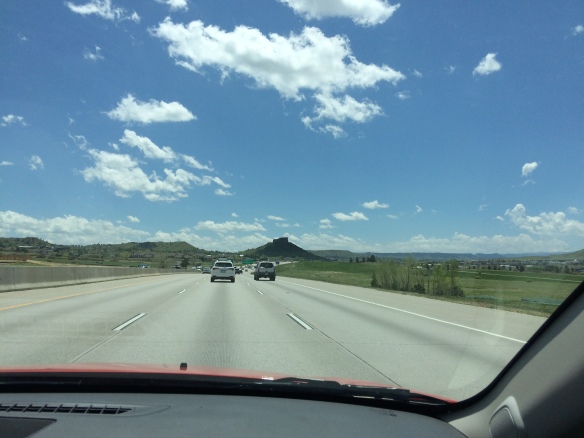
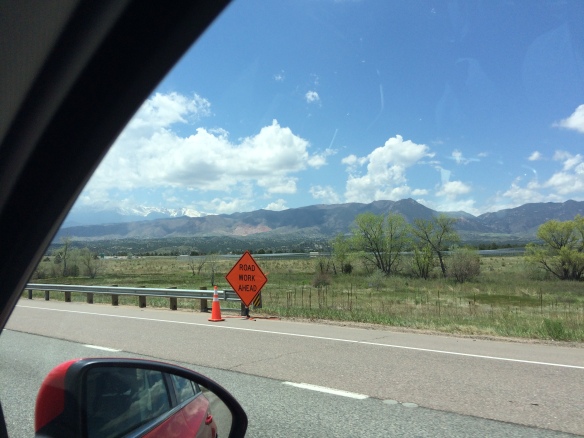

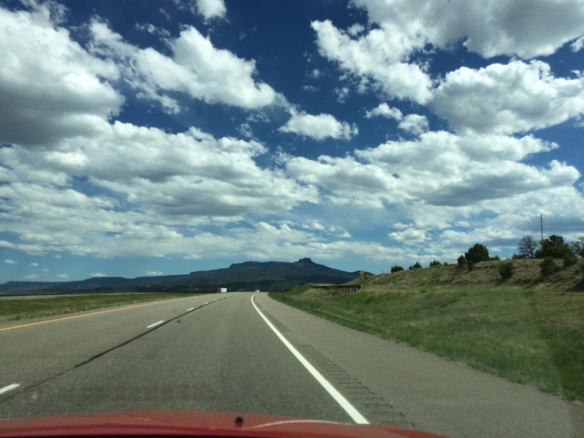


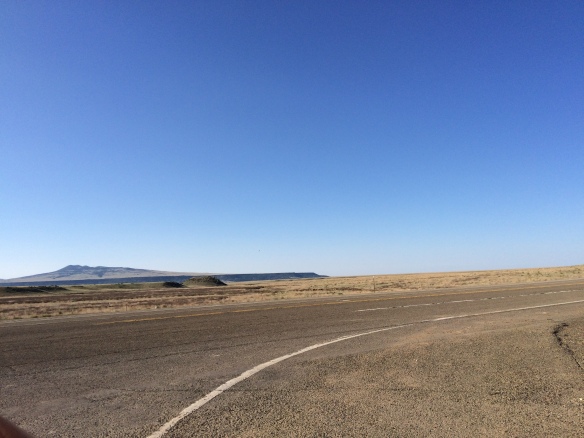
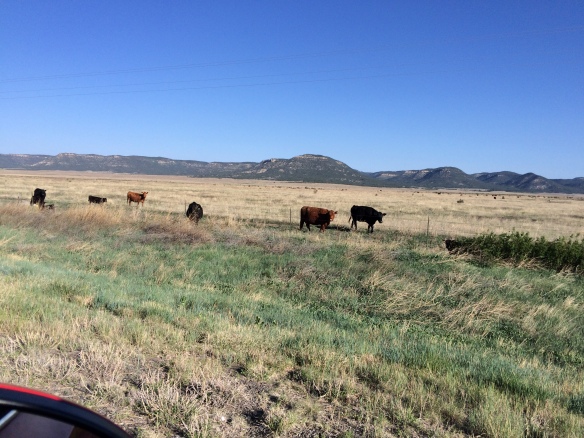
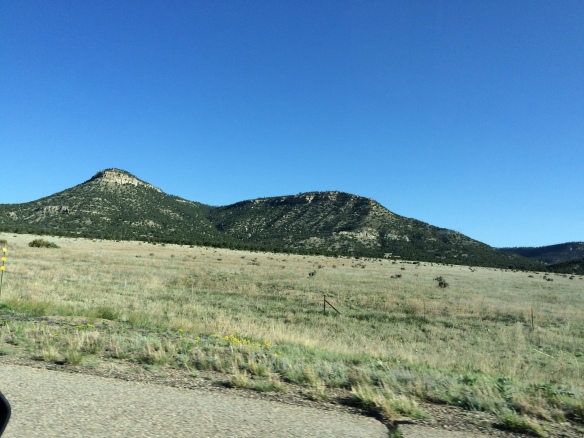


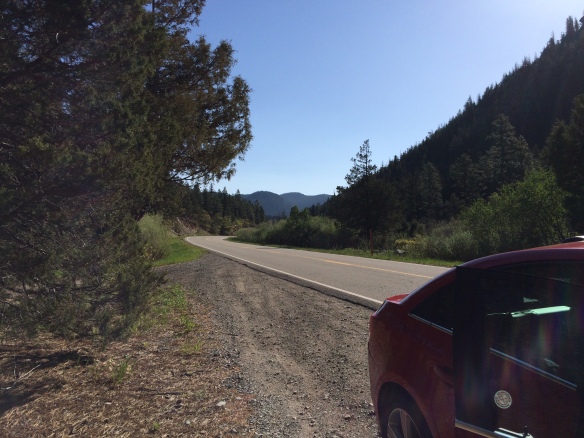
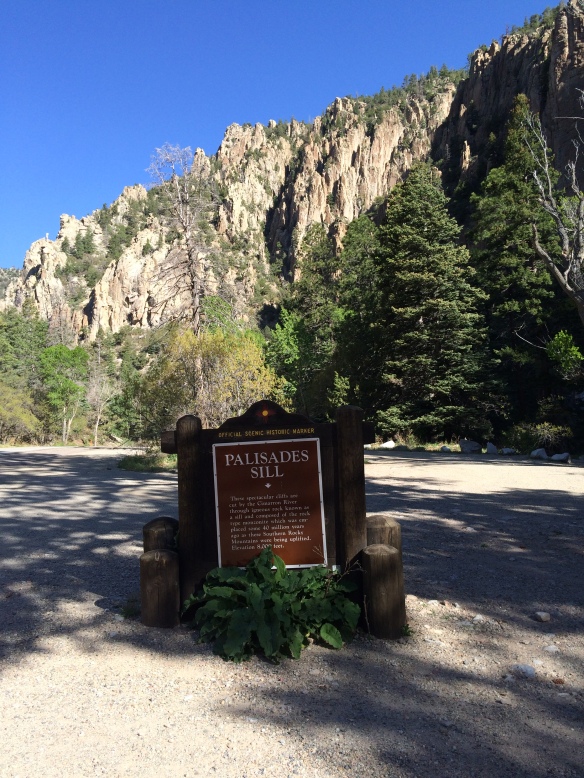
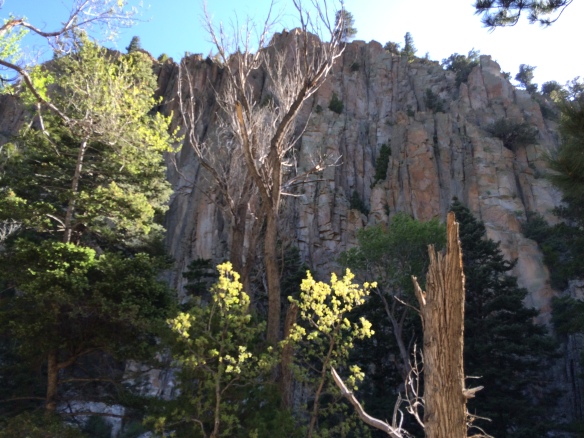
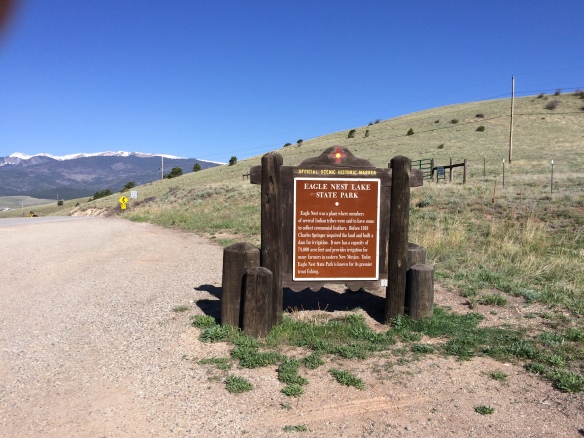
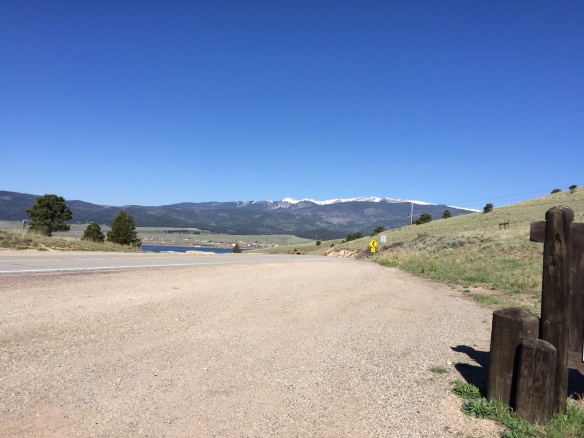
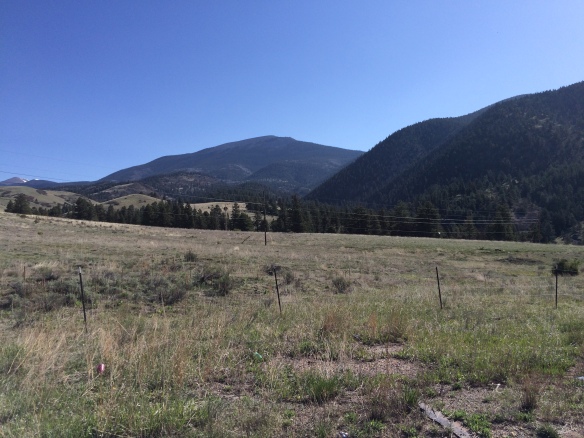
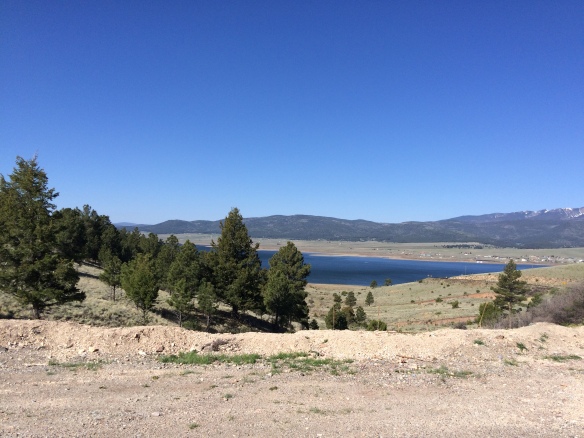
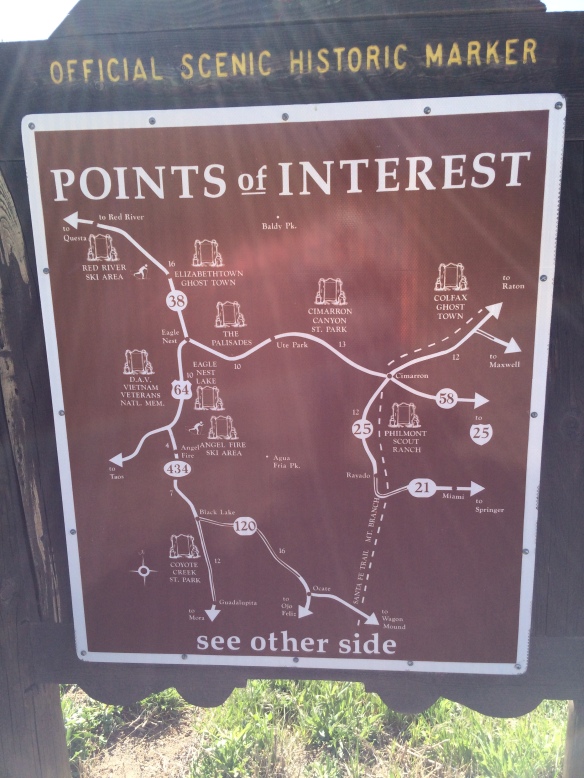


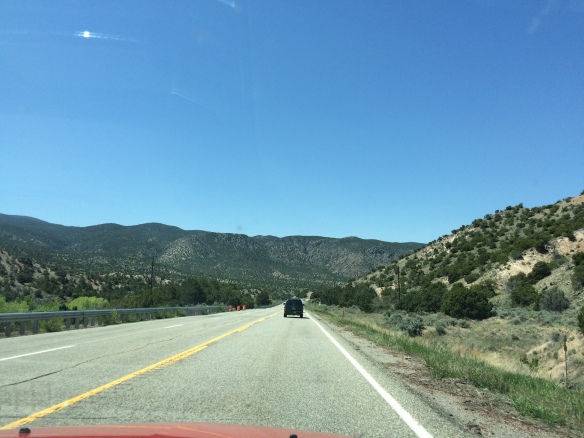
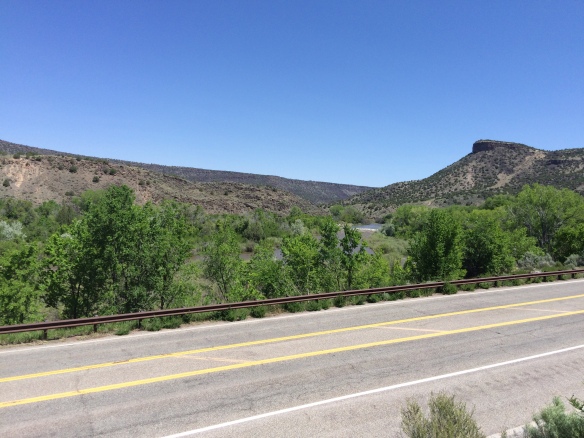
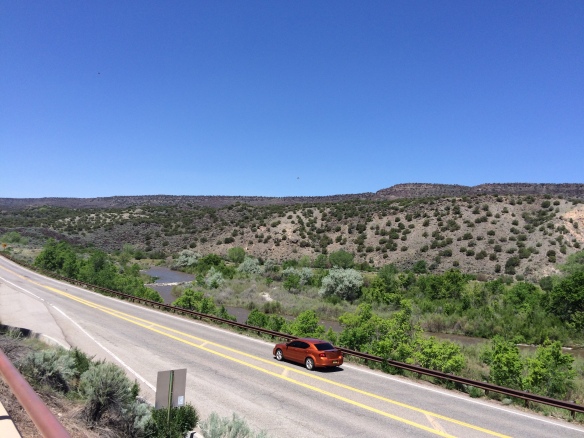
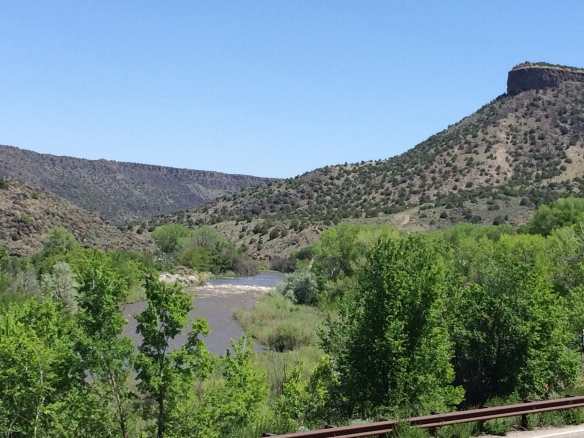
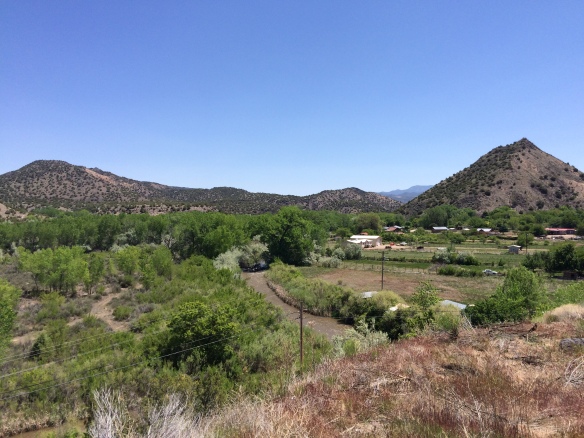
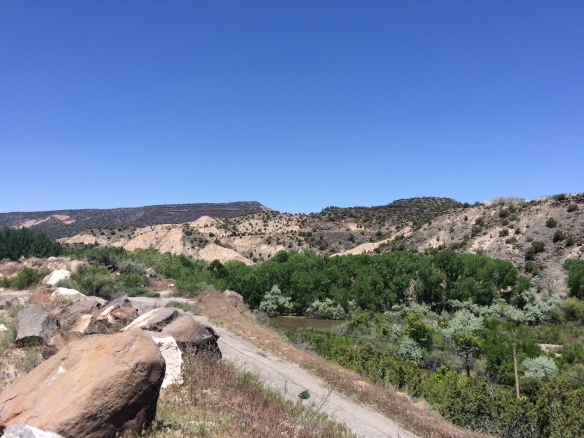
Very thoughtful piece, Amy. Travel safely.
LikeLiked by 1 person
Thanks, Leslie. I am home now, though still traveling in my head.
LikeLiked by 1 person
I remember my first trip to Colorado. It was amazing to see the rockies soar above the city of Denver. But you have not seen anything till you have seen the giant anvil of a threatening thunderstorm coming your way. In NYC I never saw a storm, just the rain and the darkness. Glad you enjoyed.
LikeLiked by 1 person
I think I am glad I missed that sight! My friend in Boulder has survived one major fire (and saw her house burn to the ground) and major flooding that resulted in evacuation of her second house, so I know how cruel nature can be out there. And everywhere, even if we can’t see it quite as dramatically from our less wide open skies.
LikeLiked by 1 person
My children learned at an early age that when the tornado sirens sounded we went to a safe room without an argument. But seeing an anvil from far away is amazing. I never saw sky growing up in NJ/NY like I do in Kansas.
LikeLiked by 1 person
It is remarkable to see how BIG and WIDE the sky truly is!
LikeLiked by 1 person
Enjoyed your trip – vicariously. Am planning a trip myself – not to the Southwest but guess where – to our son in Glastonbury.
LikeLiked by 1 person
Connecticut? Only about 40 minutes from here! Have fun!
LikeLike
New Mexico is truly an enchanting state and I just love the topography. We’ve spent quite a bit of time in Santa Fe so I’m anxious to hear how you like it. And I’m always looking for recommendations for hotels and restaurants!
LikeLiked by 1 person
It’s coming up! I am working on it now. I haven’t added restaurant recommendations, but I will certainly share the ones I have with you: Restaurant Martin, which is a bit outside the Plaza area, was quite good, as were the Shed and Osteria d’Assisi. We don’t eat Mexican food, so it was a challenge (we also don’t eat non-kosher meat, etc.), but we did manage to get three good dinners while we were there! We hardly ate locavore style since we ate fish in two of the three places (fish tacos at The Shed, tuna at Martin), but we enjoyed all three meals.
LikeLike
Stunning landscapes. It’s so interesting to read your thoughts about your travels.
LikeLiked by 1 person
Thank you, Su. As you know, writing about these experiences makes them so much more meaningful.
LikeLiked by 1 person
Interested to read the perspective about your South-west journey, historically and geographically. Those big open spaces, and then your photo the of The Canyon reminded me of Twin Peaks from the 90’s. You will be buzzing with thought!
LikeLiked by 1 person
Thanks for your thoughts, Shirley. To be honest, I never liked Twin Peaks! Too creepy for me. 🙂
LikeLike
I too am a Northeasterner, born in Newark raised in NY/NJ. However, I lived many years in the Colorado mountains, I lived in a log house at over 8,000 ft elevation. There is a rich history of Jews in Colorado. At one time there were probably only a dozen or so white men in Colorado. They traded with the indians. Most of those traders were Jewish. They took native wives (probably traded beads for them) and their descendants are unknown.
I had a friend whose grandfather came to Denver from Boston in a covered wagon. He is said to have kept kosher during the journey and during his lifetime. He started a brewery.
On your trip you must have passed by/through Pueblo. There were said to be a few Jews
living in Pueblo as far back as 1850. They set up shops outside the fort walls so that they could get inside quickly in the event of an indian attack. An old timer told us a story about how the Pueblo Jews started to have services as soon as they had a minyan. As the story goes, after they reached about 20 families, they could not get along and split into two congregations. Ha ha!
That story was told to us as a warning when five families started to join for services in the early days of Vail.
You might be interested in a book “Pioneers, Peddlers, and Tsadikim: The Story of Jews in Colorado”, I am sure it is out of print, but might be available at a large library.
LikeLiked by 1 person
Thanks for your thoughts, Bob. We actually spent a night in Pueblo on our drive back from NM to Denver. It’s quite nice there–especially the Riverwalk. But I knew nothing about its Jewish history, though one thing I have learned from my research is that Jews have lived everywhere.
And I am sure you know the old joke about the Jewish man found on a deserted island? His rescuers see two huts, each marked with a Star of David. They ask him why there are two. He replies, “One is my shul; the other is the “other” shul.” No matter where we go, we take our differences along with us!
By the way, did you ever hear from that person on Ancestry? I never got a response.
LikeLike
No. I never heard from them. What is my next step? What made you think his Brotman’s might be mine?
LikeLiked by 1 person
Although I don’t recall the particulars, I know his tree included some of the family members you had mentioned to me. Let’s see what else I can find. It might be worth you trying Ancestry for a free trial just to take a look at that tree.
LikeLike
I see on your Points of Interest map the well-known Philmont Scout camp, in Cimarron. My husband was the Scoutmaster for our two boys troop for many years, and the culminating trip is to go to that camp. My husband and two other fathers flew several boys there in ’06 and they had a marvelous time. They hiked Mt. Baldy. Gorgeous. I have never been in the region you traveled, only flown in to AZ, but this is one area I’d love to see just as you did: road trip. Thanks for the lovely photos, and your writing is very caring. Great post, Amy.
LikeLiked by 1 person
Thanks, Karen. How great that your boys have been out there—and your husband. Now it’s YOUR turn! It is much more beautiful than I’d ever expected. A real eye-opener for this Northeasterner.
LikeLiked by 1 person
Enjoyed your trip and thoughts from Denver to Santa Fee. Strange how we didn’t notice things when we were younger.
LikeLiked by 1 person
Yes, just glad that I have a chance now when I am older! Thanks!
LikeLiked by 1 person
The Rocky Mountains are amazing! I live at the base of one of them. So beautiful. Your pictures are great.
LikeLiked by 1 person
I realize now that we must have also seen some of the Rockies four years ago when we drove from SLC to Jackson, Wyoming. I think I was just less conscious of it then. I do recall thinking then also about the huge expanses of open space. It’s a very different world out there than it is here in the East.
LikeLiked by 1 person